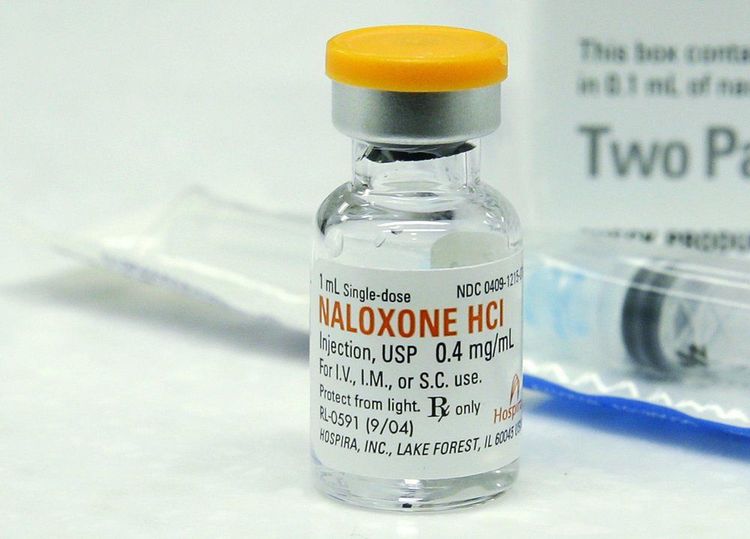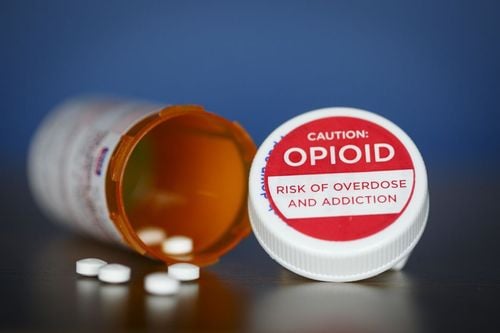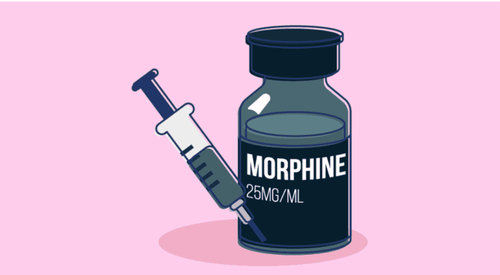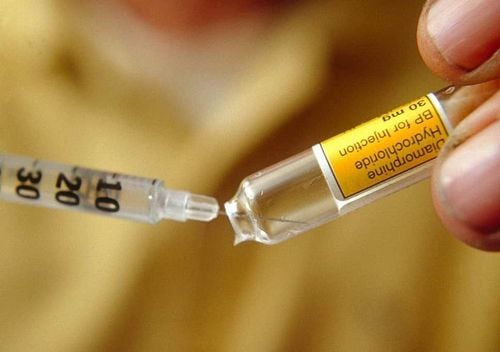This is an automatically translated article.
Opioid withdrawal syndrome is a state in which the body responds to a reduction in opioid use. Diagnosis of opiate withdrawal syndrome is based on clinical criteria and urinalysis results. The Naloxone test is used when clinical criteria and laboratory results are not conclusive.1. What is the Naloxone test?
Naloxone test is a technique of intravenous injection of Naloxone 0.4mg solution (dose of 4 ampoules) to diagnose opiate drug withdrawal syndrome, find opiate substances in the patient's body.Opium drugs, also known as Opiats, are substances of opiate origin and pharmacologically similar to opiates, such as morphine, codeine, methadone, ...
Withdrawal syndrome Opioid substances are a state in which the body responds to a reduction in the opiate substances being used, and the patient's symptoms vary depending on the drug used. The Naloxone test is performed after clinical examination and urinalysis to diagnose opiate withdrawal syndrome in the following cases:
The patient meets the clinical criteria but the urinalysis is negative. . The patient does not meet the clinical criteria and the urine test results are suspected to be negative or positive.
2. Conduct the Naloxone maneuver and evaluate the results
The Naloxone test is conducted and the results are monitored to evaluate as follows:Step 1: Intravenous injection of 0.2mg Naloxone (equivalent to 1/2 of a 0.4mg tube). Step 2: Observe and monitor the patient for 20 seconds. If there are early manifestations of opiate withdrawal syndrome, it shows that the patient is using opiates, the Naloxone test is positive. If the patient does not have symptoms of opiate withdrawal syndrome, proceed to the next 0.6 mg intravenous injection of naloxone (equivalent to 1/2 of the remaining 0.4mg ampoules and 1 ampoule of 0.4mg). Step 3: Observe and monitor the patient for 30 minutes. If there are manifestations of opiate withdrawal syndrome, indicating that the patient is using, the Naloxone test is positive. If there are no symptoms, it means that there is no opiate in the patient's body, and the Naloxone test is negative. Step 4: To confirm the results, continue intravenous injection of 0.8 mg of Naloxone (equivalent to 2 ampoules of 0.4mg), the total dose injected is 1.6 mg of Naloxone (equivalent to 4 ampoules of 0.4mg). If there are no symptoms of withdrawal syndrome, it means that there is no opiate in the patient's body, and the Naloxone test is negative.

Nghiệm pháp Naloxone là kỹ thuật tiêm dung dịch Naloxone để tìm chất dạng thuốc phiện trong cơ thể người bệnh.
3. Diagnostic criteria for opiate withdrawal syndrome
Diagnostic criteria for opiate withdrawal syndrome include clinical and laboratory criteria. Patients are diagnosed with opiate addiction when exhibiting at least 3 - 6 of the following symptom groups within the past 12 months (according to the International Classification of Diseases) of the World Health Organization 1992):Feeling compelled to use or have strong cravings for opioids. Difficulty monitoring opiate use habits in terms of dose, start or end time. There is evidence of opioid withdrawal syndrome when cutting down or stopping use. There is a tendency to have to increase the dose of opiates to reverse the effects of low doses. Seeking and using opiates to distract from hobbies and previous work. Despite knowing the harmful effects of opiates on family and society, they still seek and use them. After diagnosis based on clinical criteria, to diagnose opiate withdrawal syndrome, it is necessary to continue to search for opiates in the patient's urine by one of the tests such as rapid test, thin layer chromatography. , gas chromatography or high performance liquid chromatography.
4. Manifestations of opiate withdrawal syndrome
Opioid withdrawal syndrome has the following symptoms:Cravings for drugs, opiates, stuffy nose or sneezing, watery eyes, muscle cramps or pain, cramps, stomach cramps, or nausea or vomiting. Vomiting Diarrhea Dilated pupils Feeling chills or goose bumps Increased blood pressure or pulse Or yawning Insomnia, restless sleep Naloxone test for opiate withdrawal syndrome when clinical criteria and results Urine test results are not enough to confirm the diagnosis.
Vinmec International General Hospital is a high-quality medical examination address with a team of doctors, experts, and a system of high-quality testing equipment. Therefore, when performing a medical examination at the hospital, customers can be assured of the results of their health status assessment.
Please dial HOTLINE for more information or register for an appointment HERE. Download MyVinmec app to make appointments faster and to manage your bookings easily.













